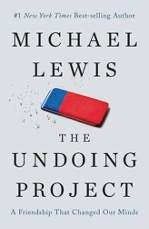Over the past few weeks in my articles, I’ve given you a quick crash course on the psychology of trading.
I started by explaining how trying to avoid losses can lead to more losses. Then I discussed how our biases affect our opinion on the stock. This lead to us looking at a pricing model that showed how sentiment is the most important factor in determining stock prices.
Now it’s time to get practical and apply this knowledge in the real world…
First, we must follow a simple lesson old traders rely on. Have a plan, and trade the plan. This is simple to know. But it’s deceptively difficult to do.
For many investors, the plan is to buy a stock, hold it as it goes up … and sell at a much higher price years from now. That is a plan. But there’s more to it.
Warren Buffett who is known for this approach actually does a lot of selling.
He bought and sold airline stocks several times over the past few decades. Sometimes he sold at a loss. And he’s done this with other stocks, too.
That’s a sign of a great investor. When the trade’s not working, sell. This allows traders to free up capital for more productive ideas.
I know that Buffett says his plan is to buy and hold forever. Buffett says a lot of things we need to be mindful of.
He also says to put all your eggs in one basket and watch the basket closely. He’s not watching the basket for entertainment. He’s going to take action if the stocks don’t go up. He’s watching for signs of danger.
That’s the part of Buffett’s teachings many investors ignore. He buys dozens of stocks. Most don’t become top 10 holdings. He sells when the stock doesn’t follow his plan.
That’s why a more detailed plan than “buy and hold” is needed.
Be Prepared to Sell
Rather than buying and hoping the stock only goes up, a good plan includes sell points. This makes it impossible to ignore bad news believing your original analysis was correct. A good plan makes sure that your money works as hard as possible for you.
Maybe you will sell if the company misses earnings expectations two quarters in a row. Or you might sell if the stock underperforms the broad market for a year. These are simple rules. But they define, in advance, why you’ll sell.
Rules like that do allow for longer holding periods. Many companies go years without missing earnings estimates. When a company does miss expectations, especially multiple misses, that’s a sign something has changed in the company. It’s no longer the same stock you bought. Since you probably wouldn’t buy that stock today, you should sell.
Setting Up Rules to Eliminate Losers
Long-term underperformance destroys your dreams. If you hold onto market laggards, you won’t earn market-beating returns. That’s just how math works. Selling after a period of underperformance frees up money for better performers.
Math shows us that selling underperformers tends to beat holding them in the long run. A classic paper in finance — “Returns to Buying Winners and Selling Losers” — revealed that losers tend to continue losing.
This is just one example of a rule. There are thousands of possible reasons to sell. Following any rule is better than not having a plan.
Of course, a plan is just one step to overcome loss aversion. The second step is acting on the plan. If the rule is triggered, you really need to sell. You can’t say things like “I’ll wait a few days and see if it comes back.” That type of thinking undermines the plan.
If you want to wait a few days for a potential reversal, build that into the plan. It’s your plan.
You can have rules like “I will sell if the company misses earnings for two consecutive quarters if the stock is lower one week after the second report is released than it was when the news was announced.”
Then you wait a few days and follow your plan.
Planning is important. Acting on the plan is equally crucial to success. There are also other ways to improve your results, and I’ll have more insights on that for you in The Banyan Edge next week.
Regards,
 Michael CarrEditor, Precision Profits
Michael CarrEditor, Precision Profits
The Undoing Project
Mike Carr really got me thinking last month when he wrote about psychological biases that affect our judgment as investors.
As I mentioned in Market Edge, behavioral finance as we know it today was invented by two incredibly insightful Israeli psychologists: Daniel Kahneman and Amos Tversky.
If you want to geek out a little, give their 1979 paper Prospect Theory a read. This was the start of a massive, growing body of work that shows how our mental biases can cause us to make poor decisions — in investing and in other aspects of life.
But if you want something a little more digestible, pick up a copy of Michael Lewis’s the Undoing Project.
Lewis is my favorite financial author, and has been ever since I read his very first book, Liar’s Poker, in college. I consider it the definitive story of 1980s Wall Street.
While I still consider Liar’s Poker his best work, you’re more likely to have heard of two of his other books that were later made into movies.
Moneyball, which starred Brad Pitt, was the story of how a bunch of quant nerds revolutionized baseball, allowing the Oakland Athletics to make it to postseason five times in seven years — all while having one of the lowest payrolls in baseball.
And of course, The Big Short was about a small handful of traders that saw the 2008 meltdown coming, and made a fortune shorting mortgage securities.
Following Lewis’ style, The Undoing Project does a deep dive into the biographies of Kahneman and Tversky. It explores how and why they were able to think so completely outside the box, and essentially threw economics as we know it out the window.
Prior to their work, economists operated under the assumption that people were rational in their economic decisions. Kahneman and Tversky not only disproved this notion, but were also able to measurably disprove it.
The Early Models
Kahneman was a Jewish Holocaust survivor who ended up in Israel after World War II.
Now, in those early years, Israel wasn’t much of a country. It was more of a mismatched collection of people with nowhere else to go and absolutely no idea how to build a state from scratch. By necessity, they made it up as they went.
And in that chaotic mess, Kahneman, a 21-year-old psyche graduate, was tasked with building evaluations for officer training.
His early models proved to be worthless because they were ultimately dependent on human judgement. And the more Kahneman worked, the more he realized that this judgement was flawed.
He then made his assessment more objective and quantitative … and his improvements helped shape one of the world’s finest armies. The Israeli army still uses his tests to this day.
Sometimes there is an advantage to starting with an entirely blank slate…
Kahneman and Tversky were relative “nobodies” in the world of economics — which, at the time, was rooted in American universities.
These guys weren’t even economists. But they were able to think about economics with fresh eyes, because as unorthodox psychologists, they didn’t have to unlearn the conventional wisdom.
If you want an enjoyable and eminently readable book that will help you better understand what makes all of us tick, pick up a copy of The Undoing Project.
Apart from peeling off a few investment lessons, you might learn a thing or two about yourself.
Regards, Charles SizemoreChief Editor, The Banyan Edge
Charles SizemoreChief Editor, The Banyan Edge







